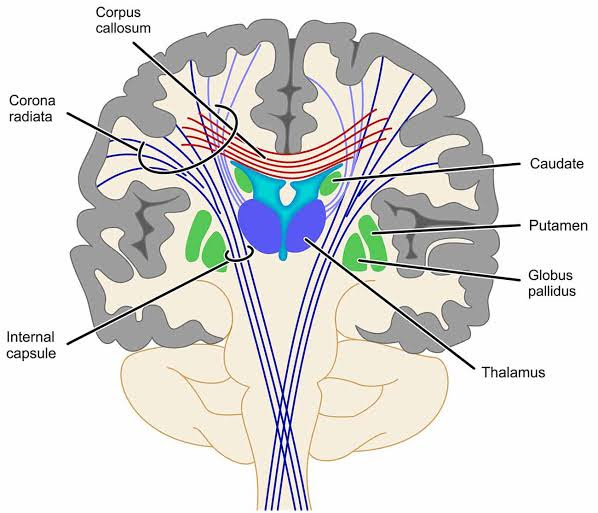
What is the corona radiata penetrating enzyme?
Answer
418.2k+ views
Hint: This is an enzyme that has a vital role in fertilization of the ovum by sperm. This enzyme is actually present in the sperms. Fertilization is defined as the process where the gametes (sperm and the ovum) fuse and ultimately a diploid zygote is formed.
The ovum is surrounded by three layers from inside to outside- Zona pellucida, Corona radiata, and cumulus oophorus (consisting of granulosa and follicle cells). For a sperm to enter the ovum, it has to cross these three layers, or you can call them barriers, at first.
Complete answer:
Many sperms after insemination reach the site of fertilization and adhere to the ovum. But only one sperm will be able to successfully enter into the ovum. The sperms after adhering to the surface of the egg (Agglutination), start a reaction known as acrosomal reaction. From the acrosomes of the sperms, hydrolytic enzymes or sperm lysins are released which include:
Hyaluronidase: Dissolves the hyaluronic acid responsible for cementing of follicle or granulosa cells.
Corona Radiata Penetrating Enzyme (CPE): Dissolves and digests corona radiata.
Zona lysin/Acrosin: Dissolves and digests the zona pellucida.
Contact of acrosomes stimulates development of an outgrowth by the oocyte called fertilization cone or cone of reception.

Another reaction occurs during syngamy which is known as cortical and zona reactions. As the sperm head comes in contact with the fertilization cone, it causes opening of $Na^+$ channels to cause depolarization of ovum membrane (fast block to check polyspermy) and $Ca^{2+}$ move into the cell. Sperm and egg membrane dissolve. Complete sperm enters the cytoplasm of the egg and the envelope is left out. $Ca^{2+}$ influx causes extrusion of cortical granules (cortical reactions) and zona reactions which make the zona pellucida impervious to second sperm by destroying sperm receptors.
Note:
Disintegration of cumulus oophorus and corona radiata takes place by the liberation of hyaluronidase from the acrosomal cap. Zona pellucida is now exposed. The sperm head now binds to specific glycoprotein receptors ZP3 of zona pellucida and induces acrosome reaction to release acrosin which digests the zona pellucida. Now the sperm head appears in perivitelline space and fuses with the vitelline membrane. This is done by two disintegrating peptides carried by the sperm head which open the gate for sperm to enter in the oocyte. As a result, a calcium wave sets in throughout the oocyte cytoplasm. This initiates completion of a second meiotic division of the secondary oocyte which results in the formation of a mature ovum with extrusion of the second polar body.
The ovum is surrounded by three layers from inside to outside- Zona pellucida, Corona radiata, and cumulus oophorus (consisting of granulosa and follicle cells). For a sperm to enter the ovum, it has to cross these three layers, or you can call them barriers, at first.
Complete answer:
Many sperms after insemination reach the site of fertilization and adhere to the ovum. But only one sperm will be able to successfully enter into the ovum. The sperms after adhering to the surface of the egg (Agglutination), start a reaction known as acrosomal reaction. From the acrosomes of the sperms, hydrolytic enzymes or sperm lysins are released which include:
Hyaluronidase: Dissolves the hyaluronic acid responsible for cementing of follicle or granulosa cells.
Corona Radiata Penetrating Enzyme (CPE): Dissolves and digests corona radiata.
Zona lysin/Acrosin: Dissolves and digests the zona pellucida.
Contact of acrosomes stimulates development of an outgrowth by the oocyte called fertilization cone or cone of reception.

Another reaction occurs during syngamy which is known as cortical and zona reactions. As the sperm head comes in contact with the fertilization cone, it causes opening of $Na^+$ channels to cause depolarization of ovum membrane (fast block to check polyspermy) and $Ca^{2+}$ move into the cell. Sperm and egg membrane dissolve. Complete sperm enters the cytoplasm of the egg and the envelope is left out. $Ca^{2+}$ influx causes extrusion of cortical granules (cortical reactions) and zona reactions which make the zona pellucida impervious to second sperm by destroying sperm receptors.
Note:
Disintegration of cumulus oophorus and corona radiata takes place by the liberation of hyaluronidase from the acrosomal cap. Zona pellucida is now exposed. The sperm head now binds to specific glycoprotein receptors ZP3 of zona pellucida and induces acrosome reaction to release acrosin which digests the zona pellucida. Now the sperm head appears in perivitelline space and fuses with the vitelline membrane. This is done by two disintegrating peptides carried by the sperm head which open the gate for sperm to enter in the oocyte. As a result, a calcium wave sets in throughout the oocyte cytoplasm. This initiates completion of a second meiotic division of the secondary oocyte which results in the formation of a mature ovum with extrusion of the second polar body.
Recently Updated Pages
Master Class 11 Economics: Engaging Questions & Answers for Success

Master Class 11 Accountancy: Engaging Questions & Answers for Success

Master Class 11 English: Engaging Questions & Answers for Success

Master Class 11 Social Science: Engaging Questions & Answers for Success

Master Class 11 Biology: Engaging Questions & Answers for Success

Master Class 11 Physics: Engaging Questions & Answers for Success

Trending doubts
Why is there a time difference of about 5 hours between class 10 social science CBSE

Fill the blanks with proper collective nouns 1 A of class 10 english CBSE

The Equation xxx + 2 is Satisfied when x is Equal to Class 10 Maths

Write examples of herbivores carnivores and omnivo class 10 biology CBSE

10 examples of evaporation in daily life with explanations

Choose the feminine form of the given noun Fox AFoxess class 10 english CBSE




